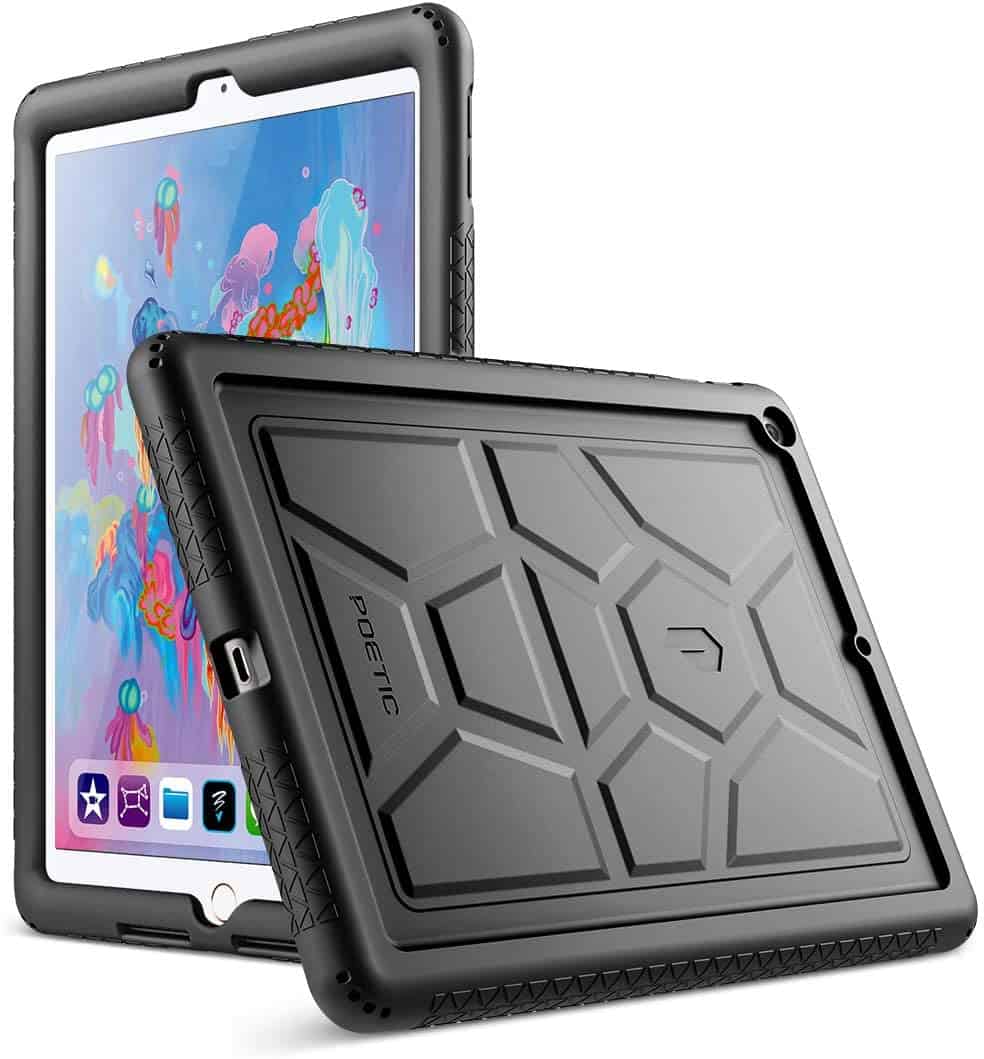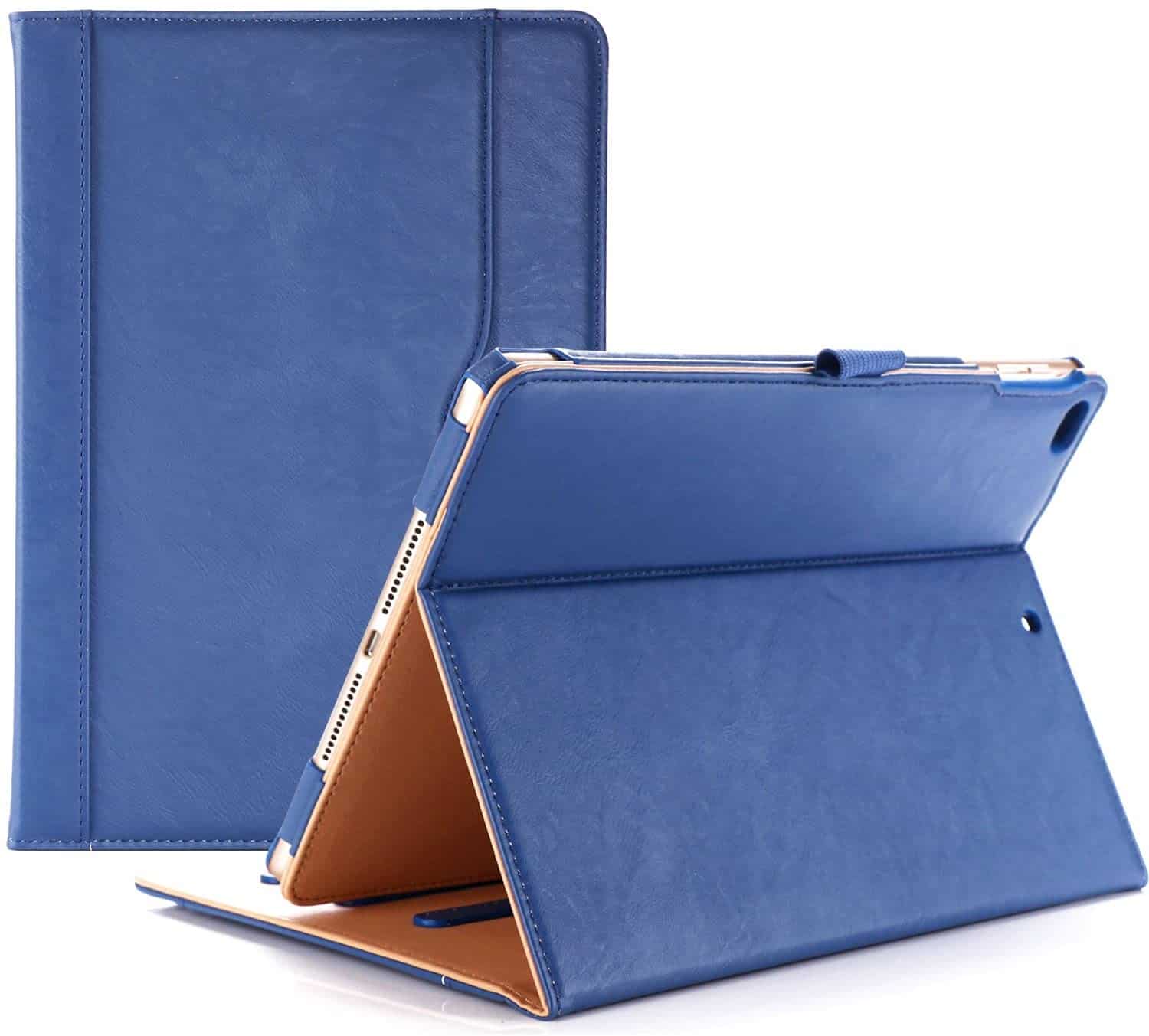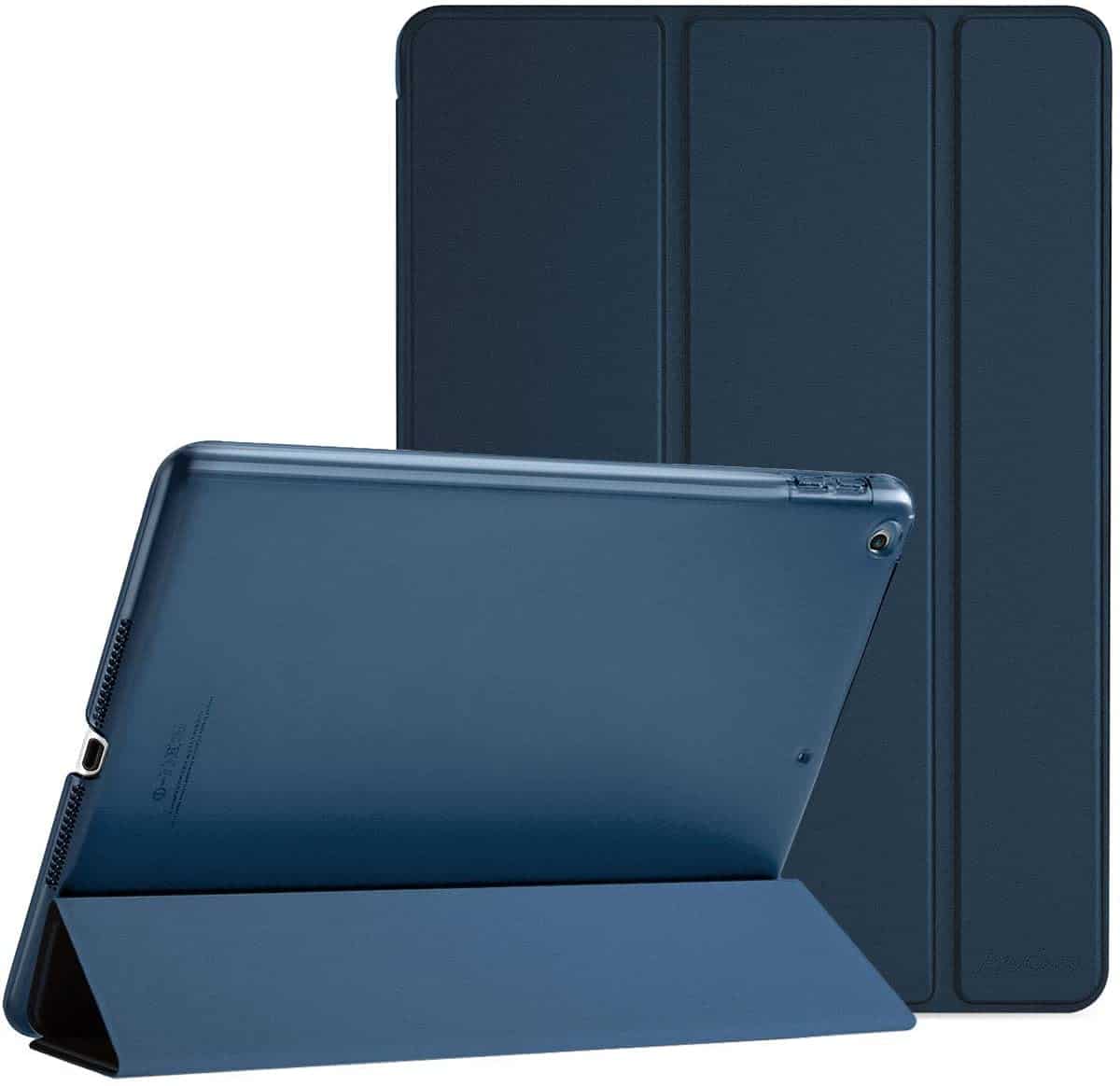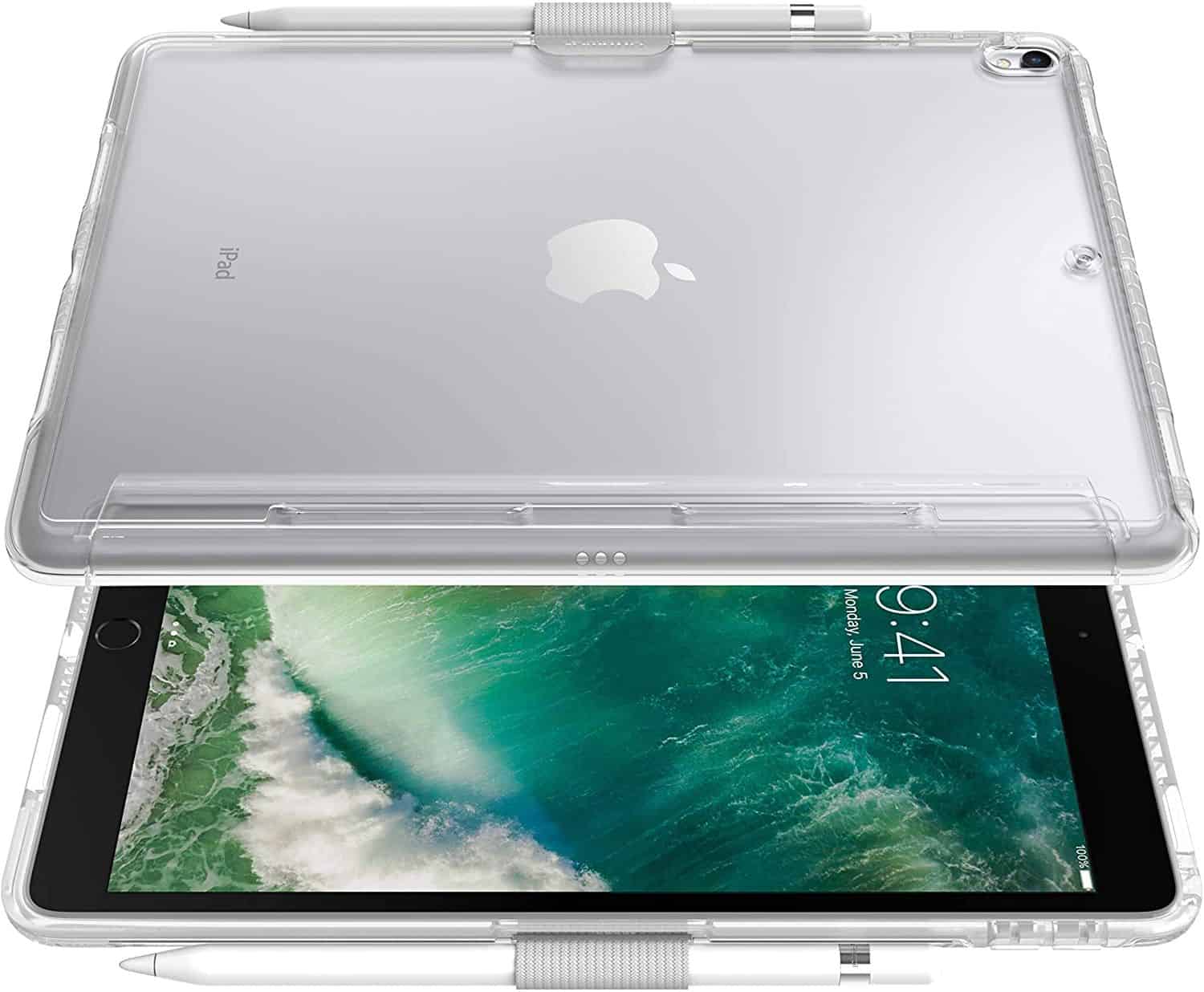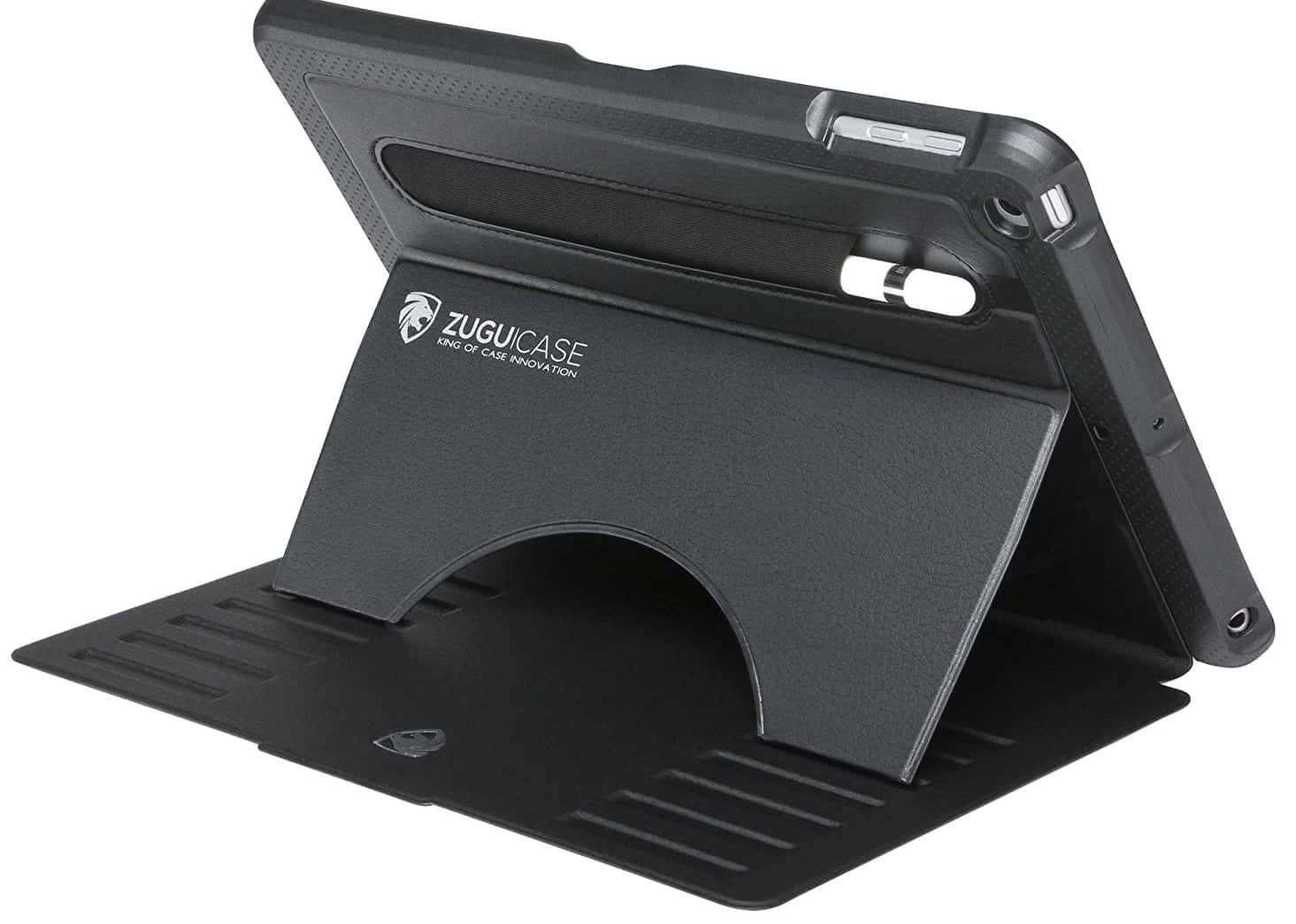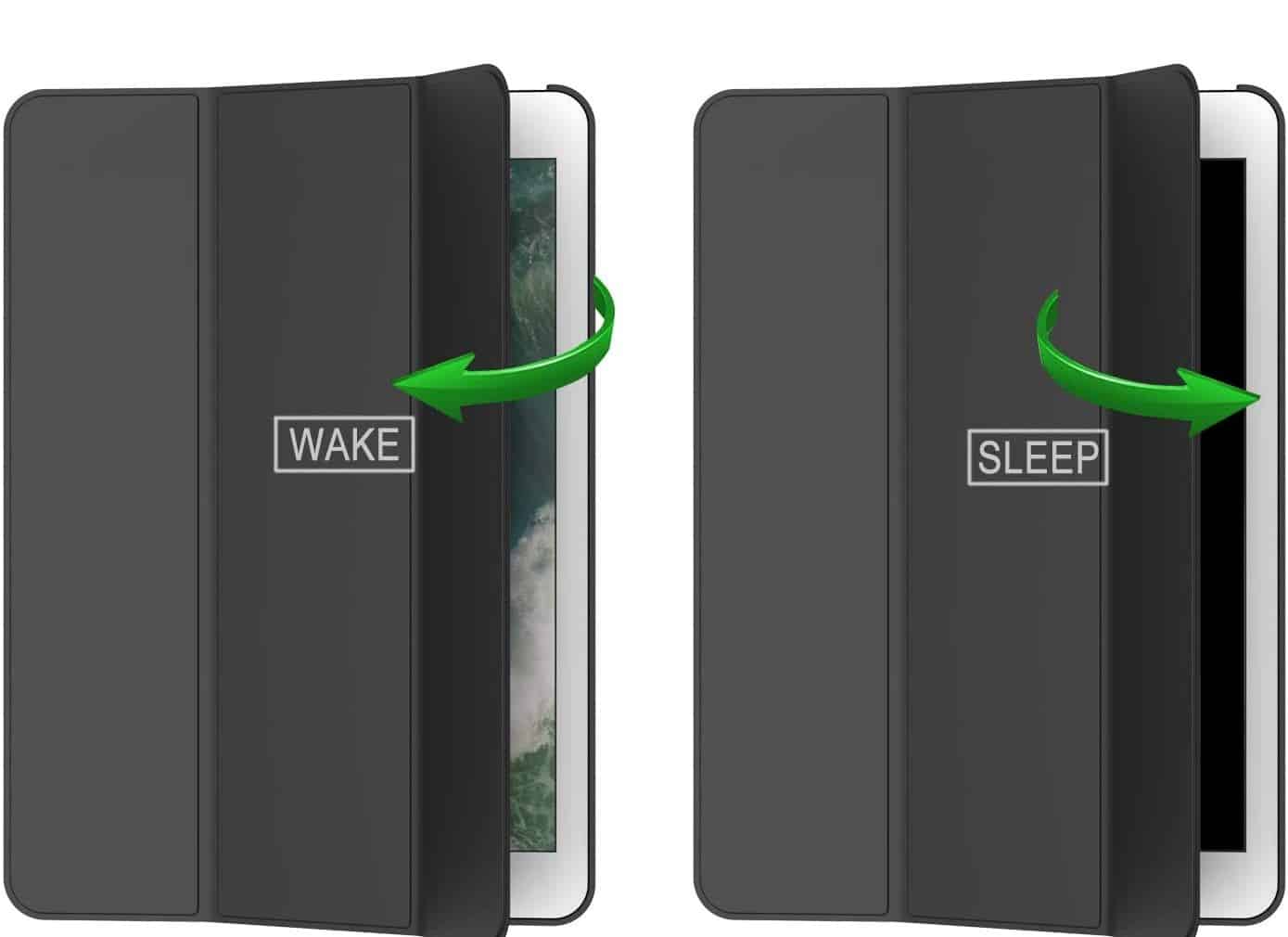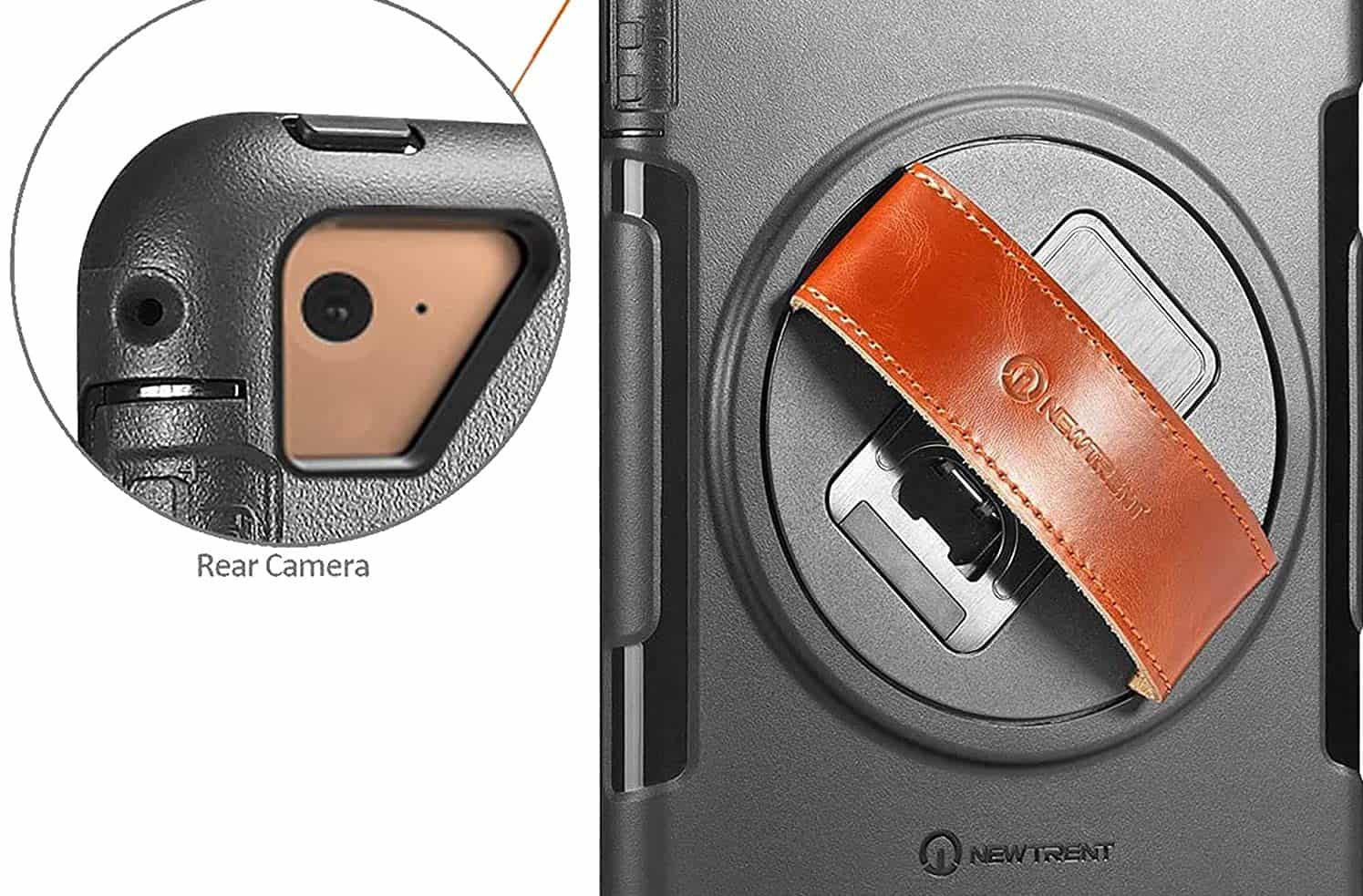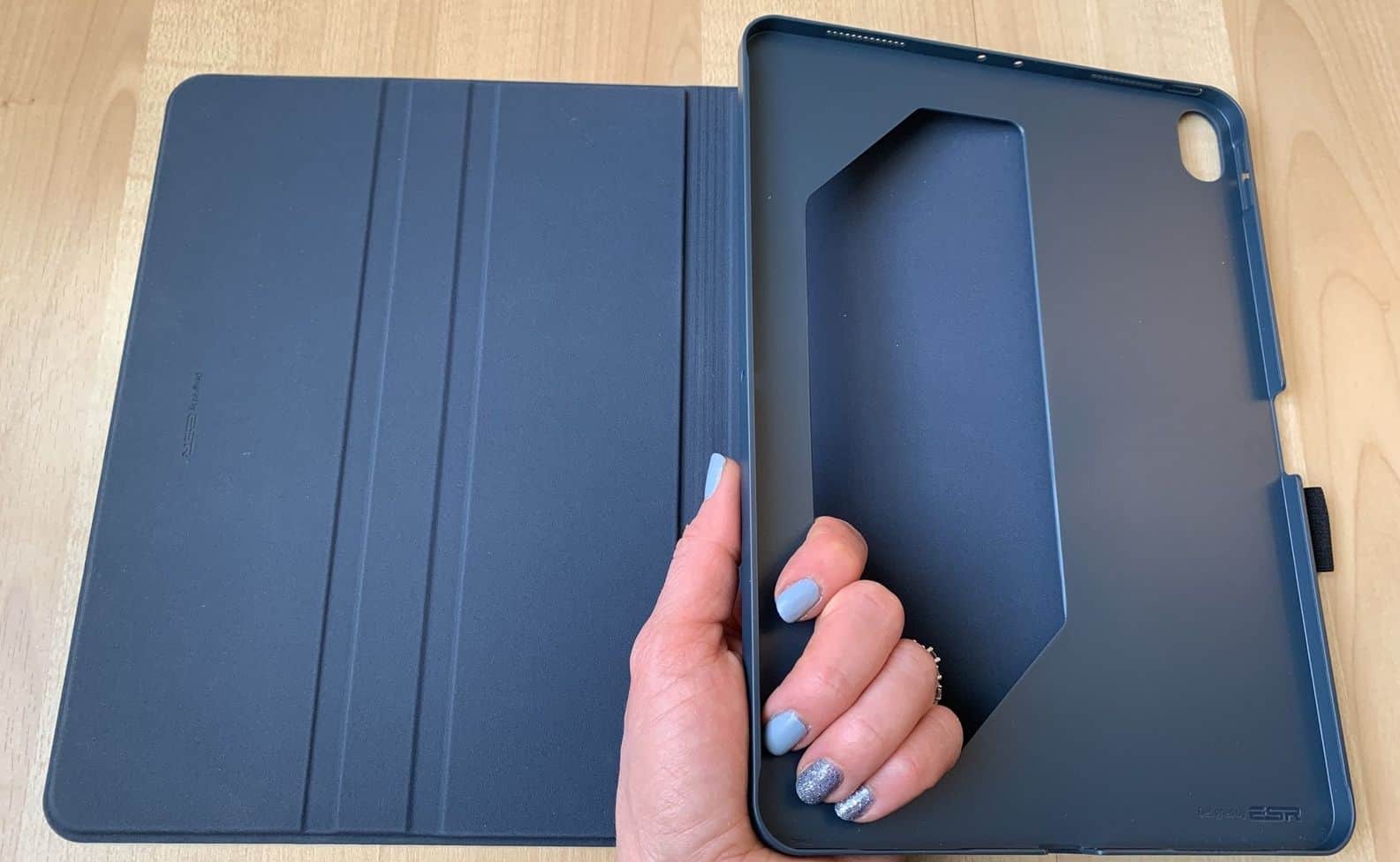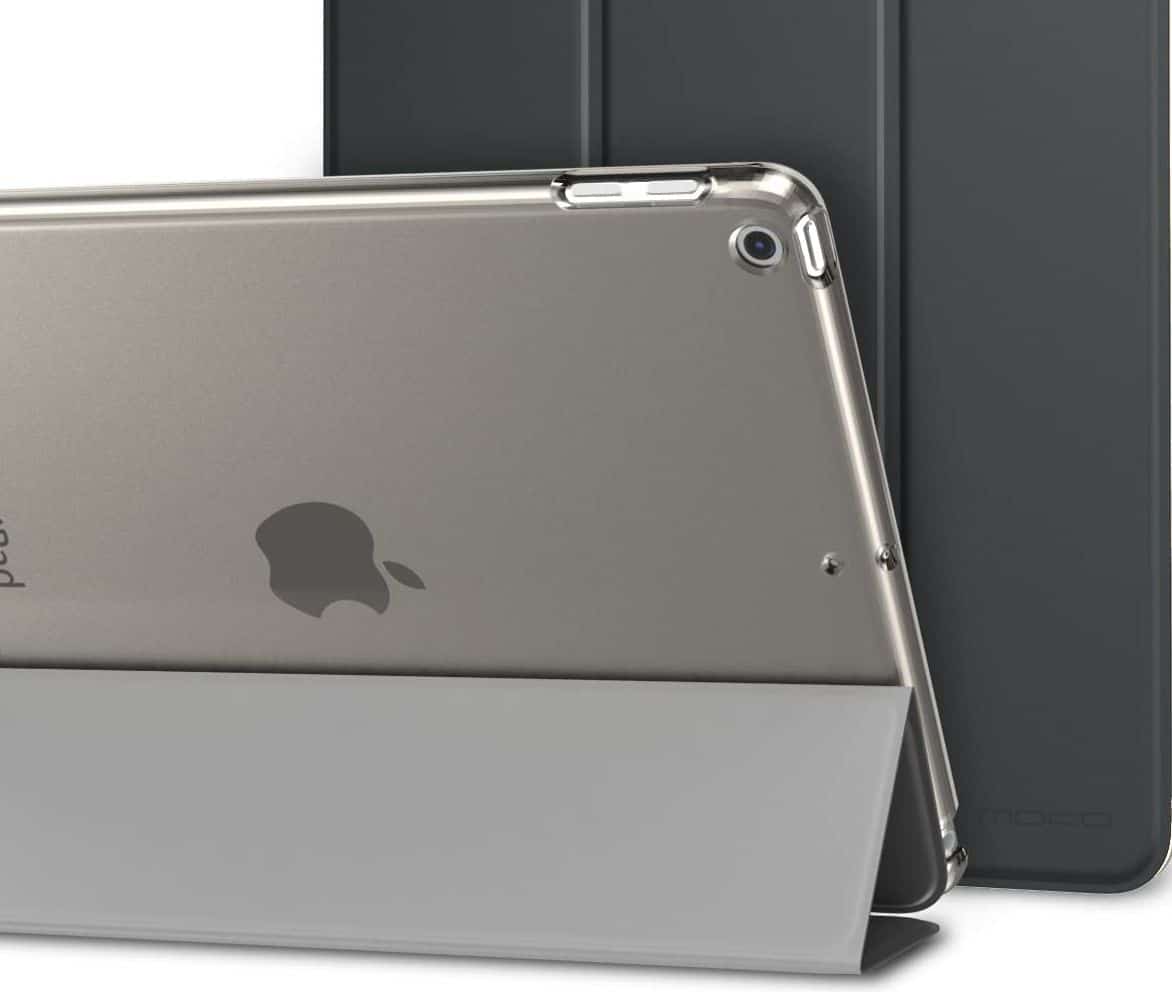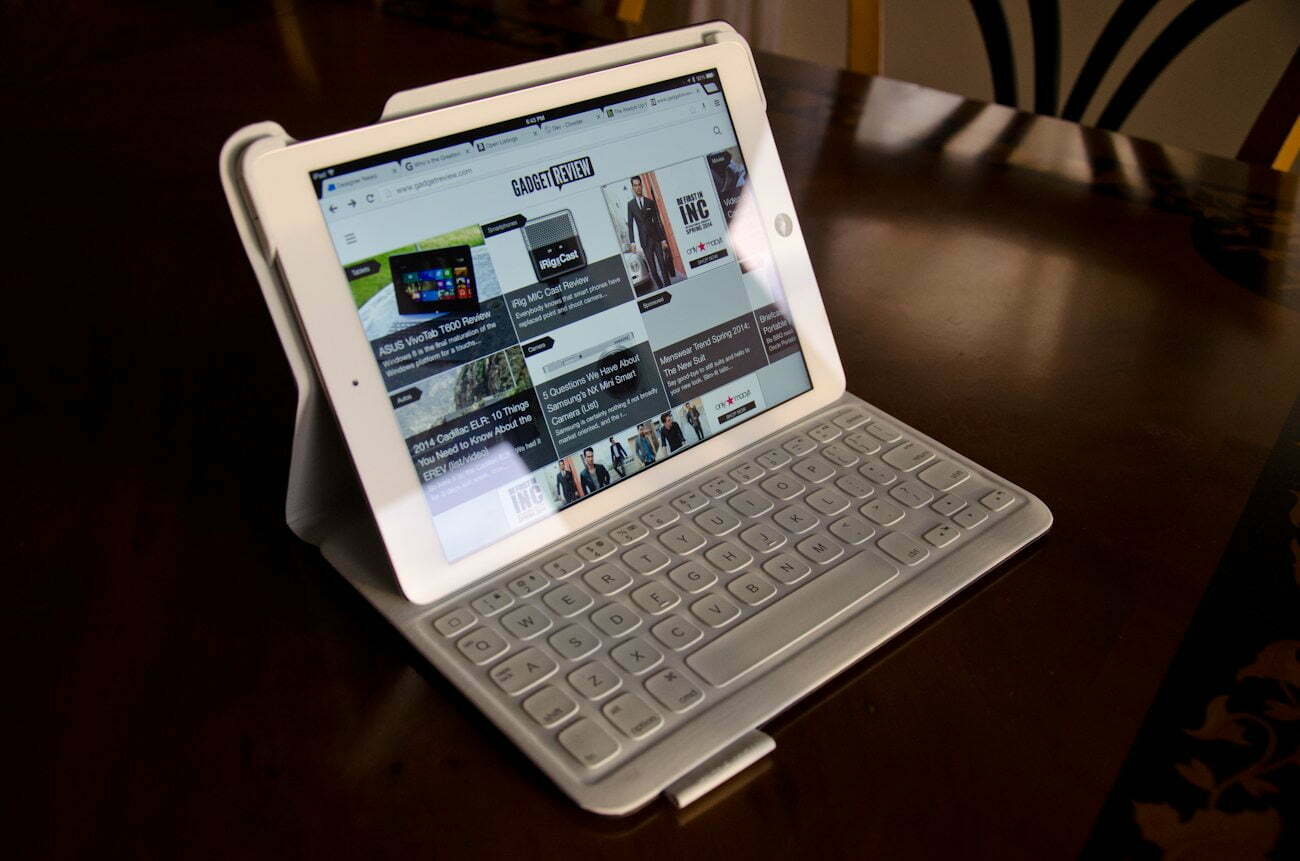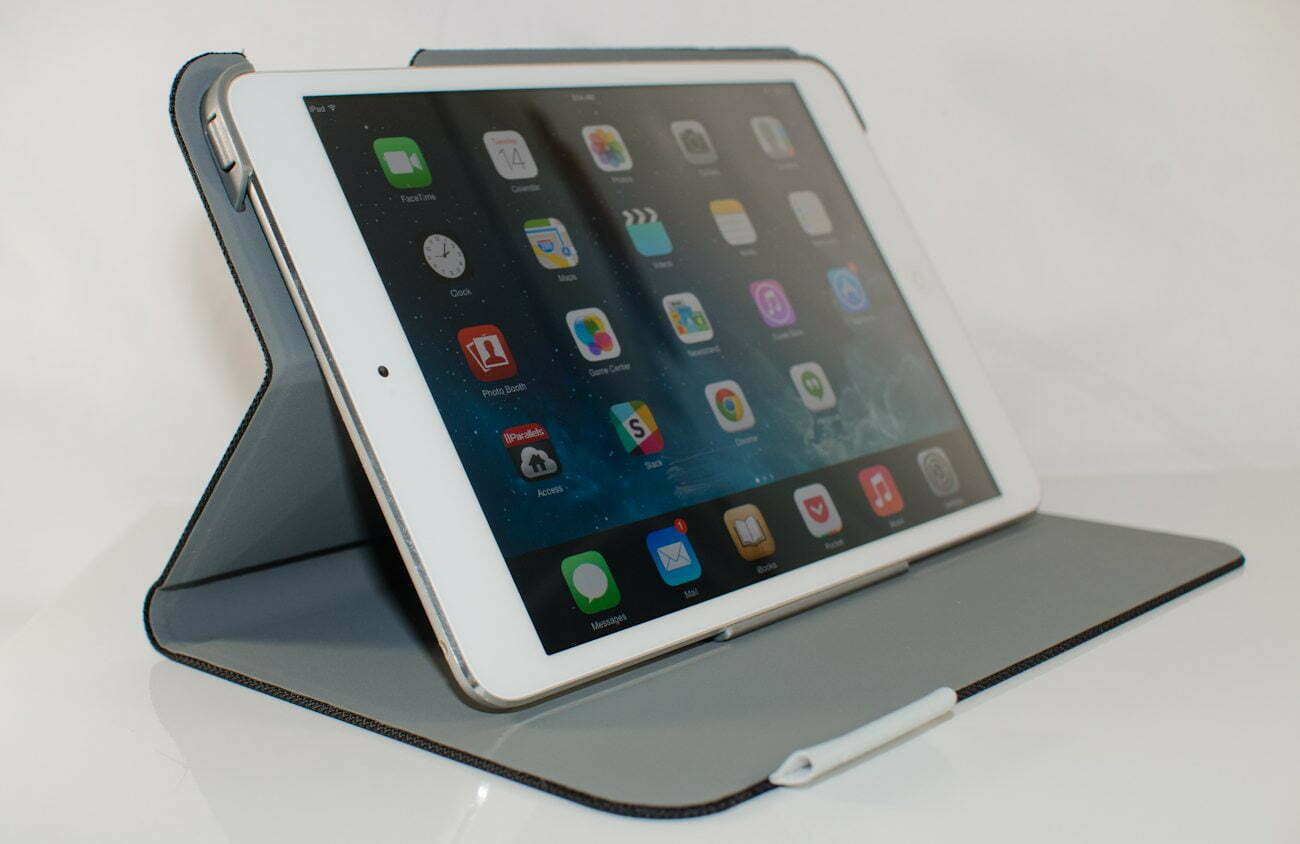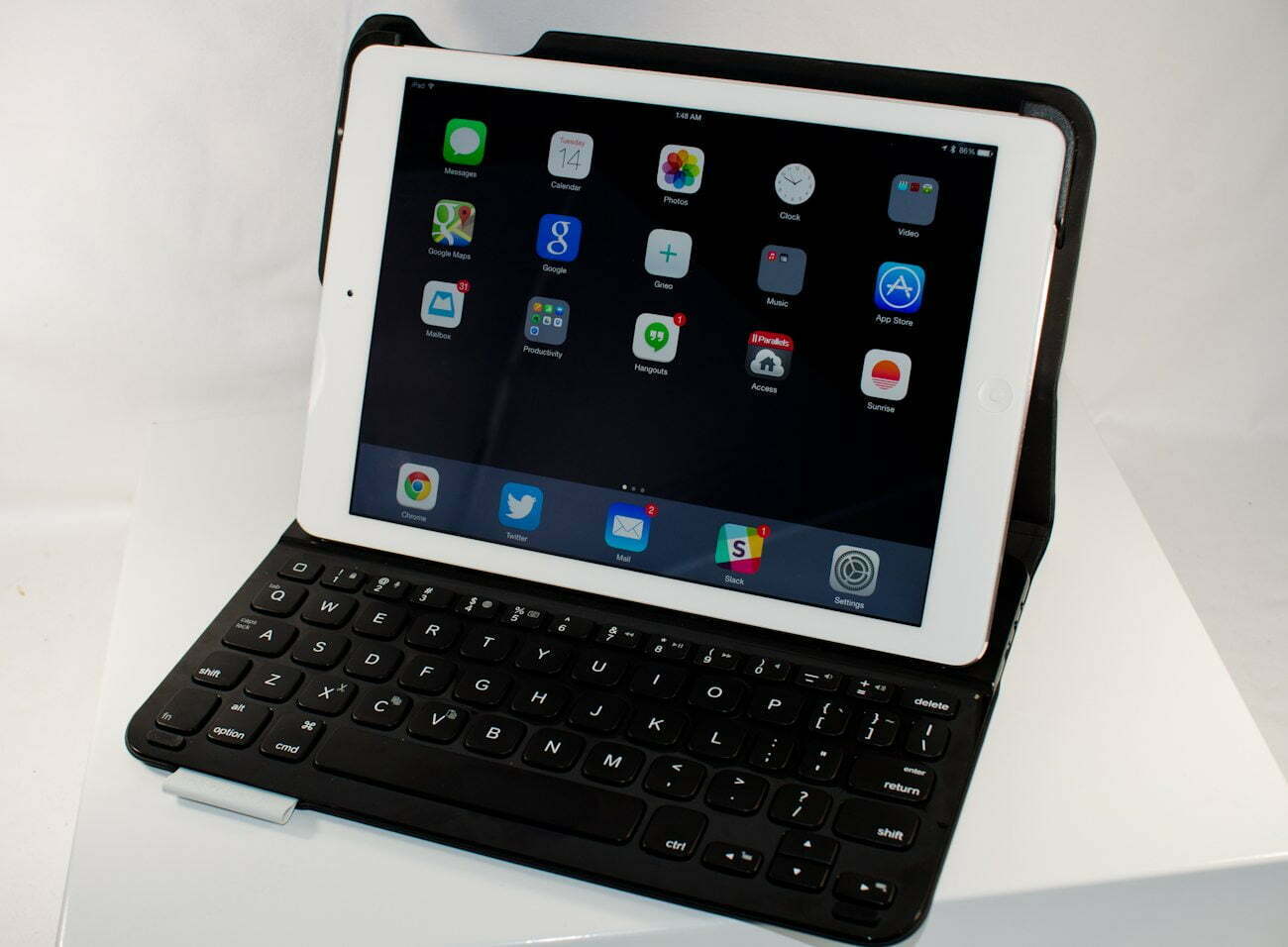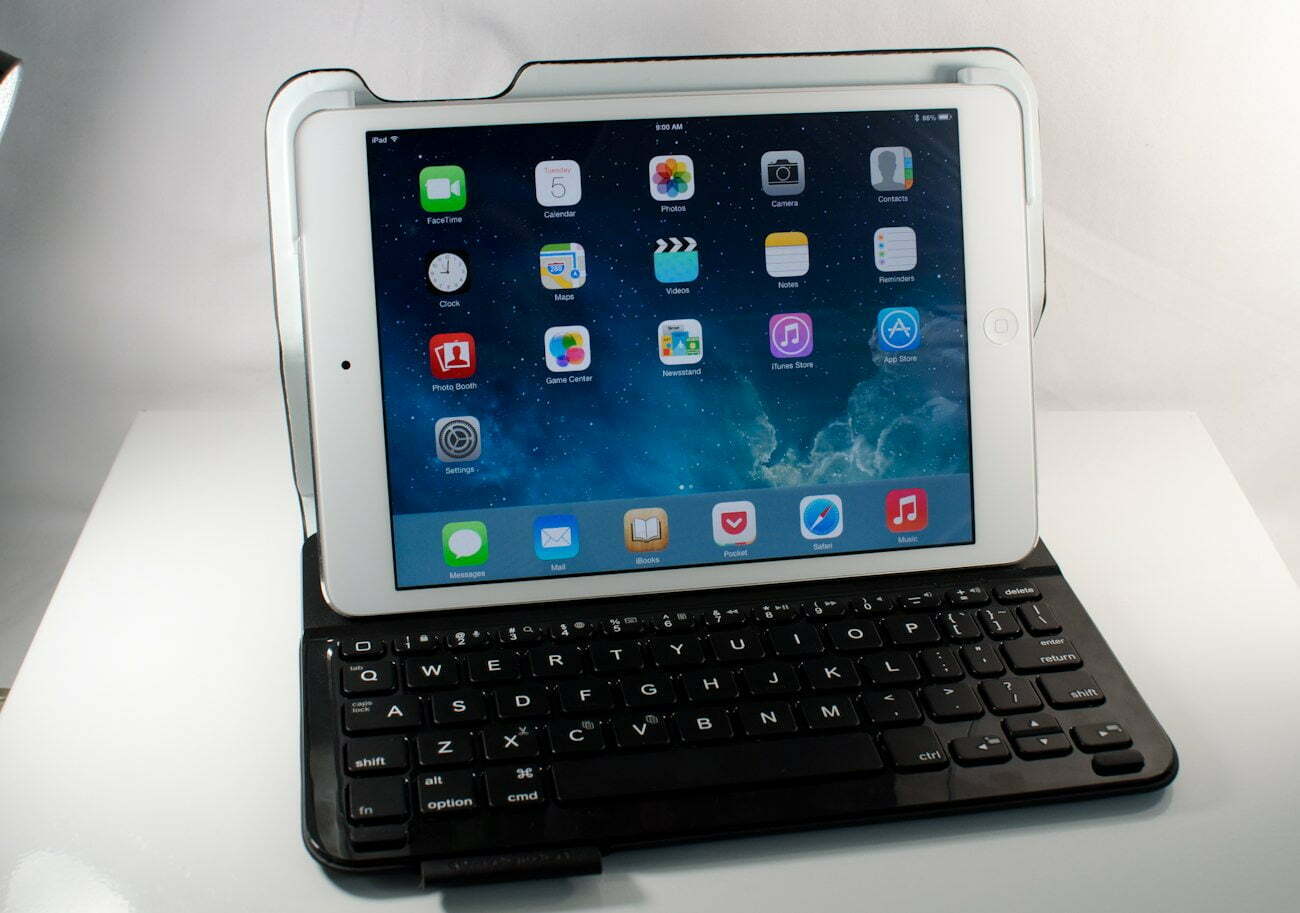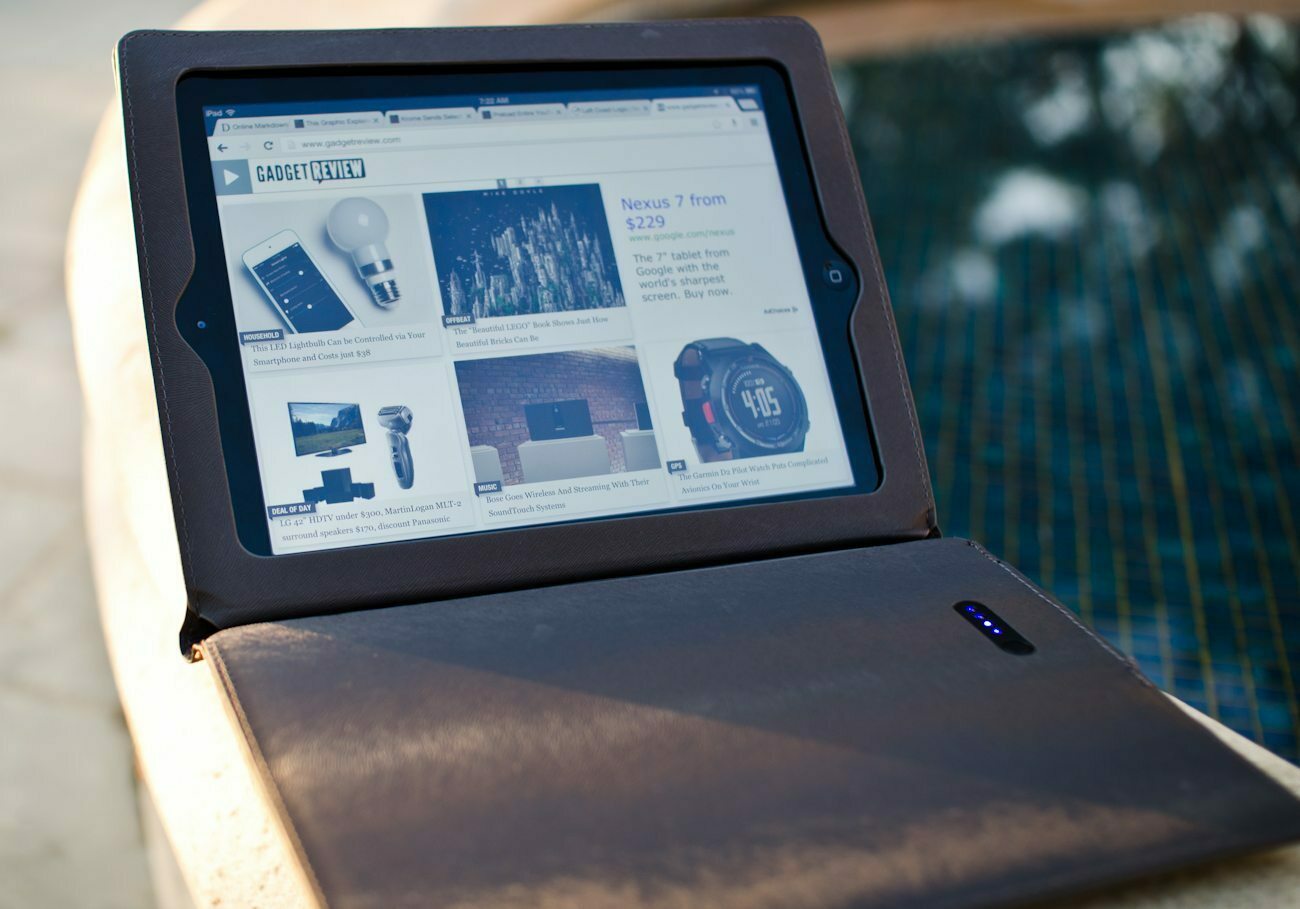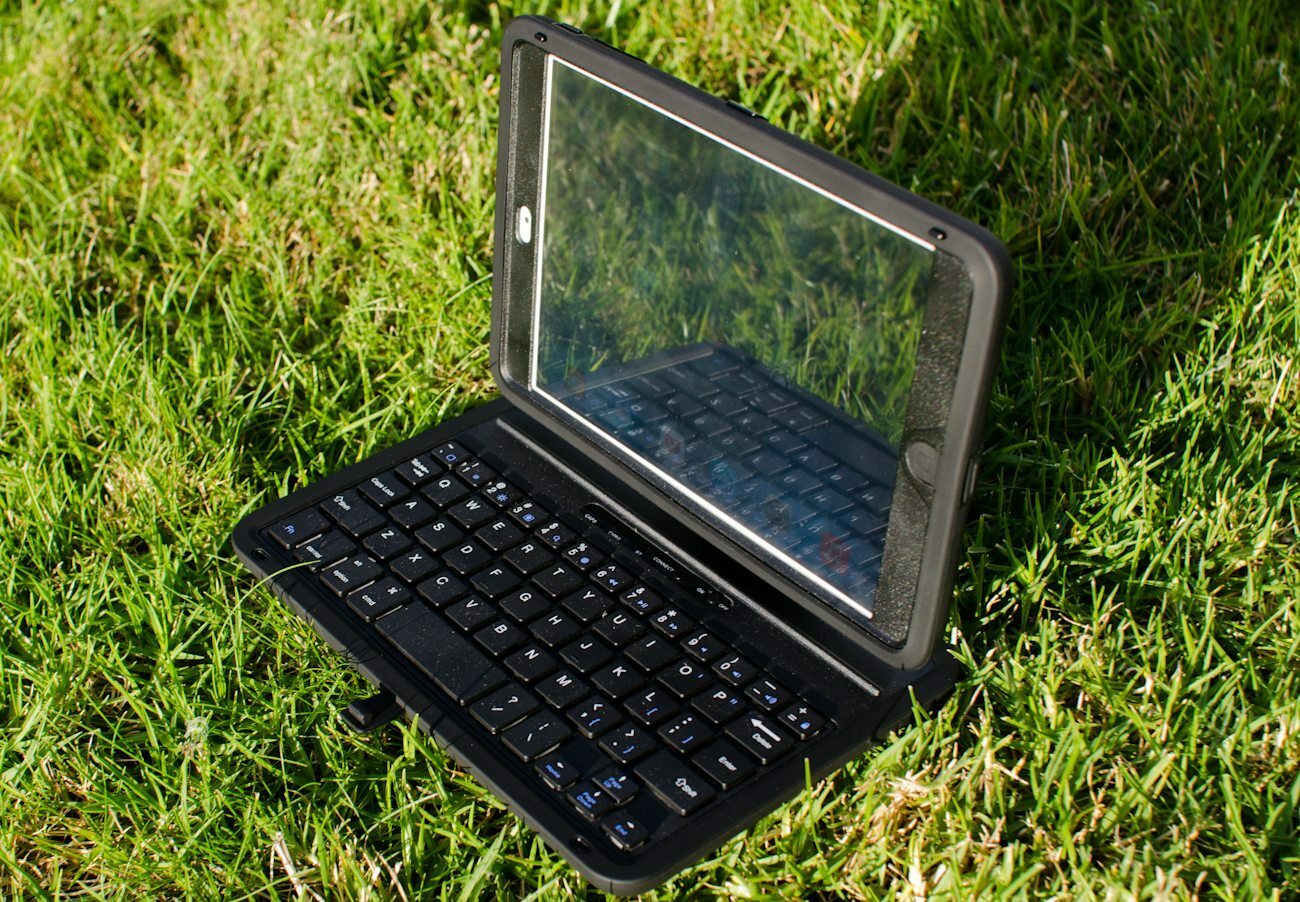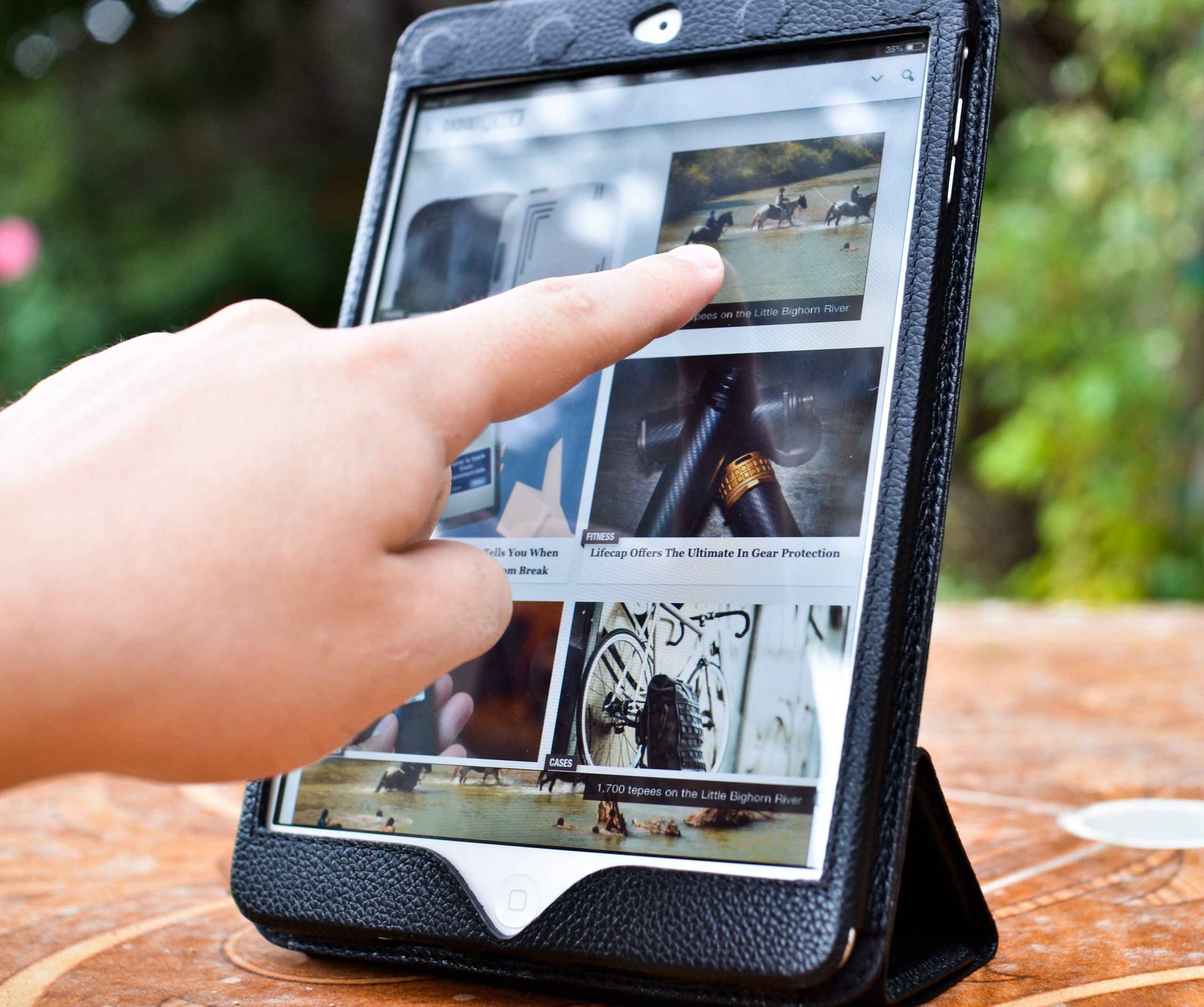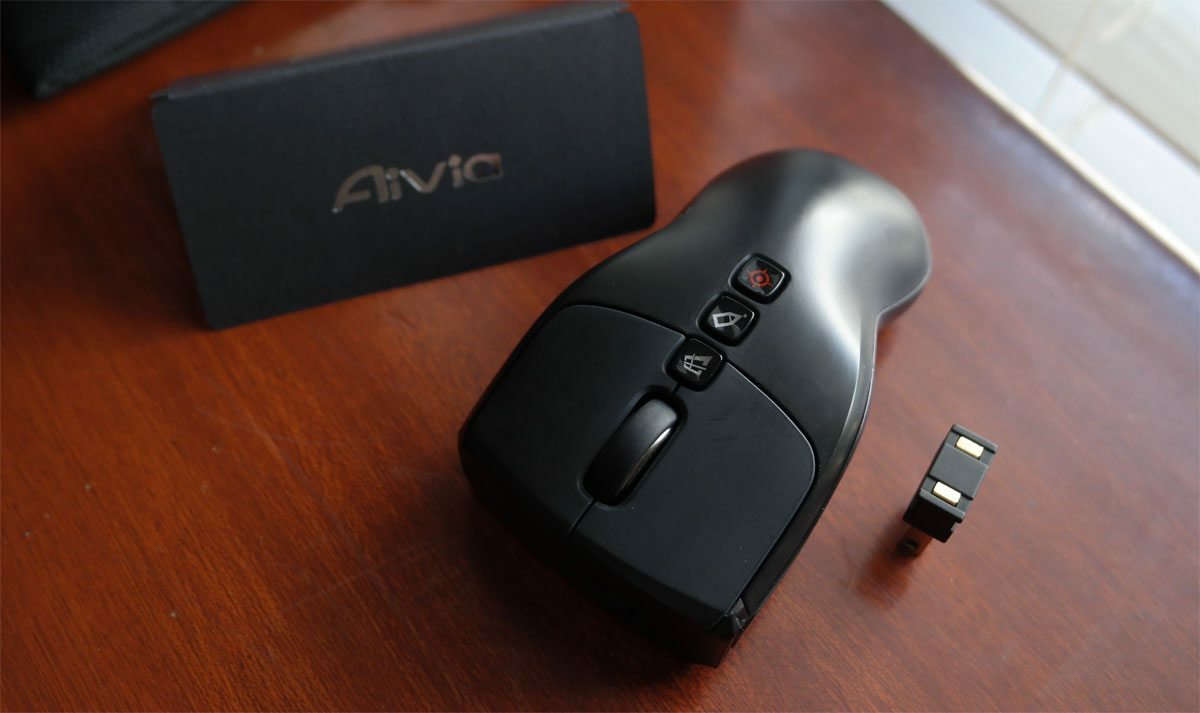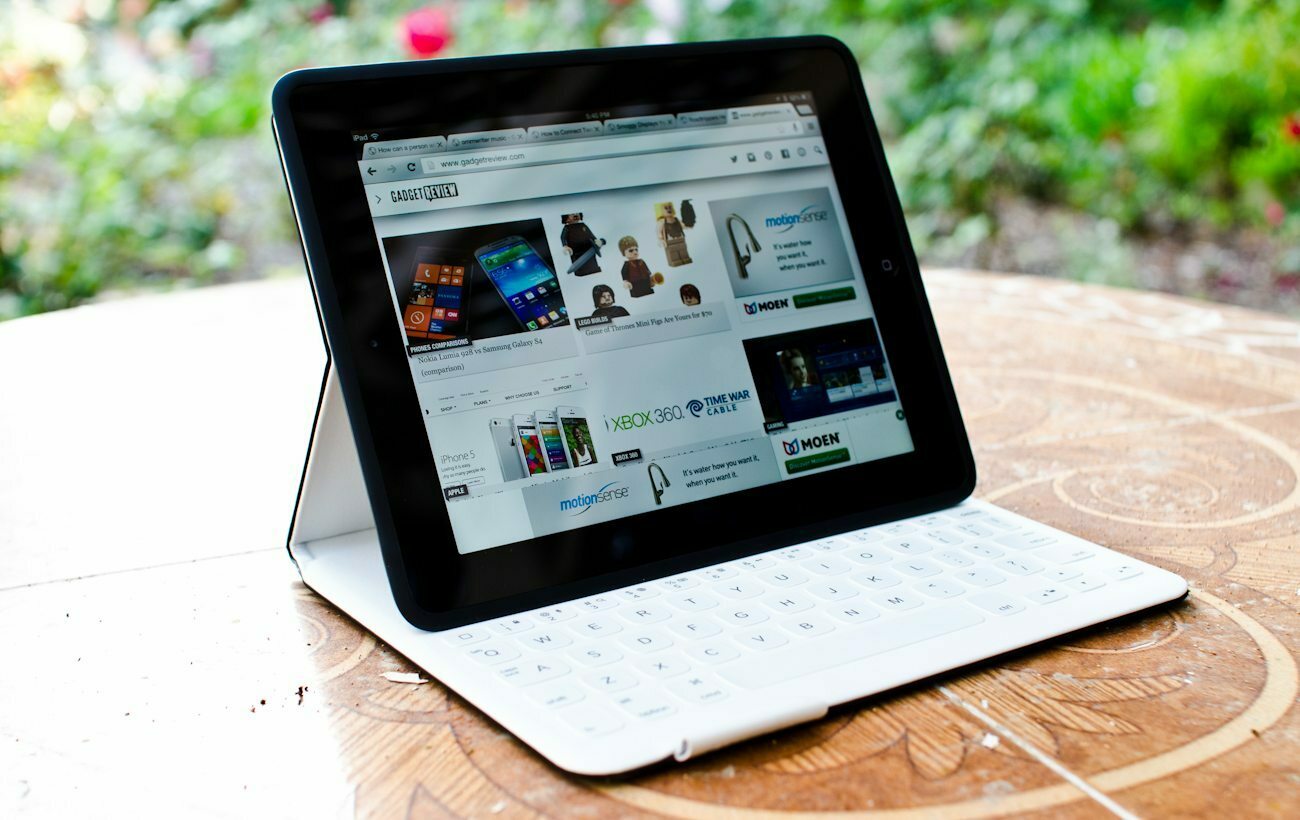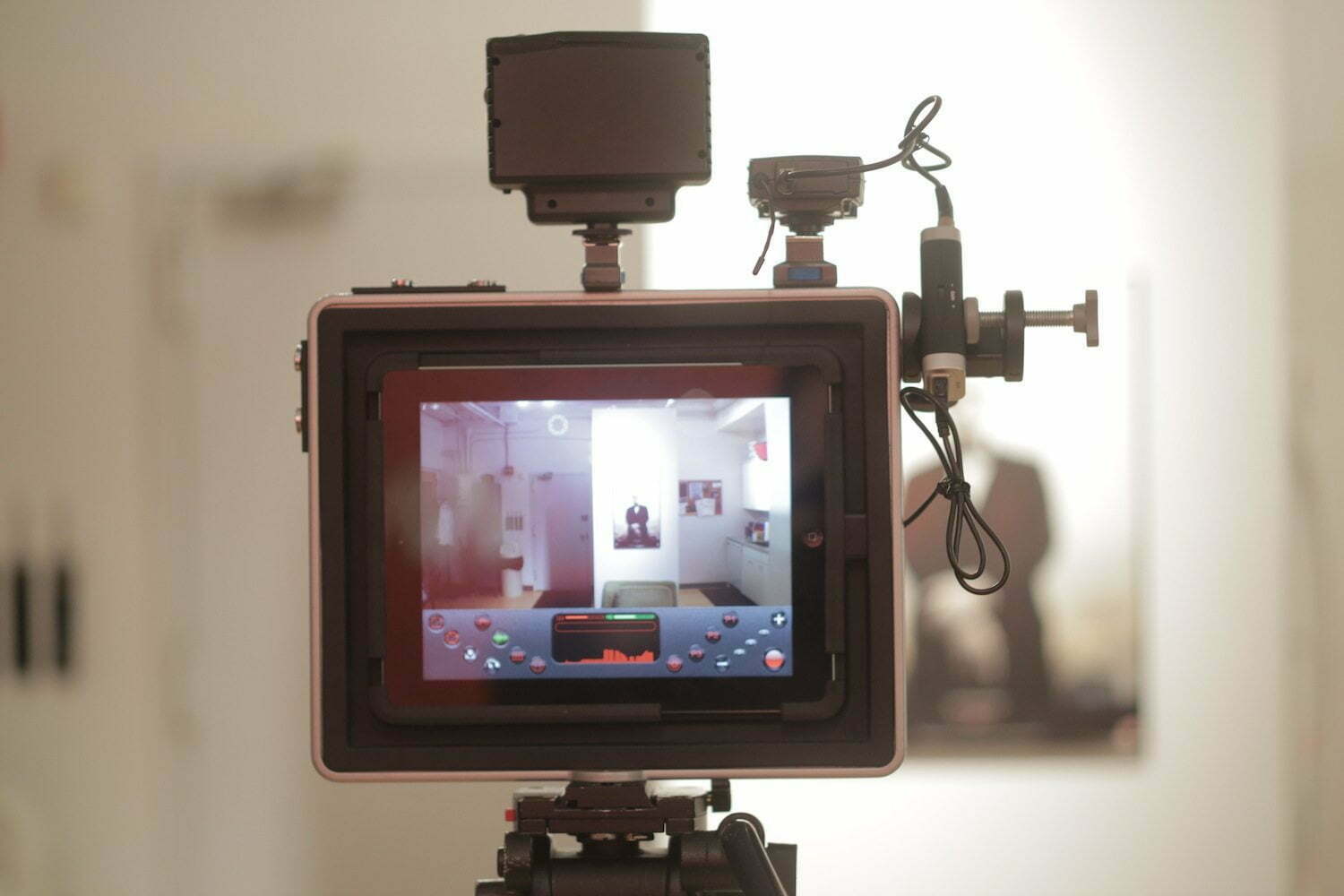While we could write an article comparing iPad Air to its most recent predecessors (3rd and 4th Generation iPads), a comparison of the iPad Air to the iPad 2 is much more exciting. And as it turns out, those are the only two models still available from Apple. Besides the substantial weight difference (iPad Air is about a third-of-a-pound lighter than iPad 2), there were significant improvements across the board including display resolution, processing speed, RAM, graphics power, still/video camera resolution, and cellular carrier options. If you’re really looking for an upgrade, take a look at the Apple iPad 4 review too.
A comparison of the iPad Air with the now discontinued 3rd and 4th generation iPads isn’t as dramatic. For one, Apple has kept the same Retina display with resolution of 2048×1536 and 264 pixels-per-inch. The 1.4 GHz dual-core CPU used in the 4th-Generation iPad remains in the iPad Air, although it uses the “Cyclone” variant rather than the “Swift” variant used previously. RAM has stayed the same at 1024MB, although the latest LPDDR3 chip improves upon the LPDDR2 used in the last two iPad models. And, the back camera hasn’t changed since the 3rd-Gen, offering HD video at 1080p HD (30fps) and 5 Megapixel stills. If you really love Apple products, you might also be interested in reading our Apple iPad mini vs iPad review.
Let’s take a look at how the recently-released iPad Air has substantially improved the tablet experience from the iPad 2 that first hit stores in March, 2011, but is still available from the Apple Store and Apple resellers worldwide.
System-on-a-Chip (SoC)
Apple’s A7 System-on-a-Chip first hit Apple products in September, appearing in the iPhone 5s. A variant of the A7, APL5698, is used in the iPad Air and is a huge improvement from the A5 used in the iPad 2. For one, maximum CPU clock-rate has been improved from 1 GHz (iPad 2) to 1.4Ghz (iPad Air). While it may not seem like a huge jump, the A7 also improves efficiency and speed with 64-bit architecture (the A5 is 32-bit) and the M7 motion coprocessor which collects data from the tablet’s sensors. The A7 used in the iPad Air is also slightly faster than the A7 used in the iPhone 5s clocked at 1.3GHz. So if you’re looking to upgrade your iPad 2, the iPad Air will be a huge improvement, and you can also know why by reading our review of the best Apple iPad Air features.
RAM
Apple has doubled the RAM in the iPad, jumping from 512MB in the iPad 2 to 1024MB in the iPad Air. It doesn’t seem like a huge improvement considering the iPad 2 was launched two-and-a-half years ago. But the ‘Air’ uses the faster and more energy efficient LPDDR3 RAM, rather than the DDR2 chip used in the iPad 2.
Cameras
The cameras in the iPad Air have been substantially improved from those in the iPad 2. The back camera (usually the higher resolution camera in tablets), provided 720p video and 0.7 megapixel still images. The video resolution has been improved to 1080p, and vastly improved to 5 megapixel still images.
The front camera on the iPad 2 only offers VGA quality video and still images at 640×480 resolution (oh, how VGA seems so long ago). But along comes the iPad Air, bumping up video to 720p HD and still images up to 1.2 megapixels. The 3rd-Generation iPad, by the way, still housed that VGA-resolution camera until the 4th-Generation iPad released last February that improved the front camera to what it is today.
Sensors
Apple iPads come with environmental sensors including an ambient light sensor, magnetometer, and accelerometer for measuring X, Y, Z movement. However, all iPads after the 1st-Generation added a gyroscope sensor, adding to the acceleration sensor by measuring roll, pitch and yaw. While both models integrate the same sensors, the iPad Air’s M7 motion coprocessor handles processing to the A7 SoC can be freed up for other processing.
Siri
While the iPad 2 will support iOS 7, it will not support Siri. So, if you’ve gotten used to using Siri voice commands to send messages or look up contacts, you won’t be able to do it on the iPad 2. Both the iPad Air and iPad mini support Siri. So if you need a real iPad upgrade, you may want to take a look at some of the best features of the Apple iPad Air 2, which has several significant updates to the original Air.
Cellular Carriers
For those of you interested in purchasing cellular service with your iPad, the iPad Air has added the third and fourth most popular cellular companies – Sprint and T-Mobile – to the list of supported carriers. The iPad 2 only supported AT&T and Verizon, but the iPad Air supports 4 different carriers, allowing you more flexibility in your choice of service providers. The number of carriers is also an improvement from the 3rd-Generation iPad that only supported AT&T and Verizon, and the 4th-Generation iPad that added Sprint to the list of carriers.
What Hasn’t Changed?
The most apparent characteristic that hasn’t changed is the display size of the iPad that has remained at 9.7-inches (diagonal) since the first iPad was released 3 years ago. And while the resolution of the screen may have improved after the iPad 2, the iPad display is still LED-backlit with IPS technology, finished with fingerprint-resistant oleophobic coating. Apple also rates battery life exactly the same for both tablets: Up to 10 hours of web surfing via Wi-Fi, watching movies, or listening to music.
Pricing
As far as pricing, the cheapest iPad 2 w/16GB is $399 (reduced from $499 at launch), while the iPad Air w/16GB is $499. The 16GB with Wi-Fi and Cellular is $529, while the iPad Air with Wi-Fi and Cellular starts at $629. Way to go Apple, more technology for the same launch price! However, where the iPad capped-out at 64GB, the iPad Air has added 128GB capacity. The priciest iPad Air is the 128GB model with Wi-Fi and Cellular for $929.
The chart below provides a quick reference to the major changes in the iPad Air and iPad 2.
| Model | iPad 2 | iPad Air |
| Model # | A1395 (WiFi), A1397 (WiFi + CDMA), A1396 (WiFi + GSM) | A1474 (WiFi), A1475 (WiFi + Cellular) |
| Released | Mar. 11, 2011 | Nov. 1, 2013 |
| SoC | Apple A5 | Apple A7 |
| CPU | 1 GHz dual-core ARM Cortex-A9 | 1.4 GHz dual-core Apple Cyclone |
| GPU | Dual-core Power VRSGX543MP2 | PowerVR G6430 |
| Memory | 512 MB DDR2 RAM | 1024 MB LPDDR3 RAM |
| Storage | 16GB, 32GB, 64GB | 16GB, 32GB, 64GB, 128GB |
| Display | 1,024 × 768 pixels (132ppi) | 2,048 × 1,536 pixels (264 ppi) (Retina Display) |
| Front Camera | 0.3 MP still, 640×480 (VGA) video | 1.2 MP still, 720p video |
| Back Camera | 0.7 MP still w/5× digital zoom / 720 p HD, 30fps still and video camera | 5 MP still w/5× digital zoom / 1080p HD, 30fps, still and video camera |
| Sensors | Accelerometer, ambient light sensor, magnetometer | Accelerometer, ambient light sensor, magnetometer + gyroscope |
| Weight (Wi-Fi only model) | 1.325 lb (601 g) | 1.034 lb (469 g) |
| Measurements | 9.5 (H) × 7.31 (W) × 0.346 (D) in | 9.4 (H) × 6.6 (W) × 0.295 (D) in |
| Wireless | Wi-Fi (802.11a/b/g/n) | Wi-Fi (802.11a/b/g/n) |
| Bluetooth | Bluetooth 2.1+EDR | Bluetooth 4.0 |
| SIM Card | Micro-SIM | Nano-SIM |
| Connector Type | 30 pin | Lightning |
| Lowest Price | Wi-Fi 16GB $399 | Wi-Fi 16GB $499 |
| Highest Price | Wi-Fi + Cellular 64GB $829 | Wi-Fi + Cellular 128GB $929 |
[Update: Pricing has been revised on iPad 2]

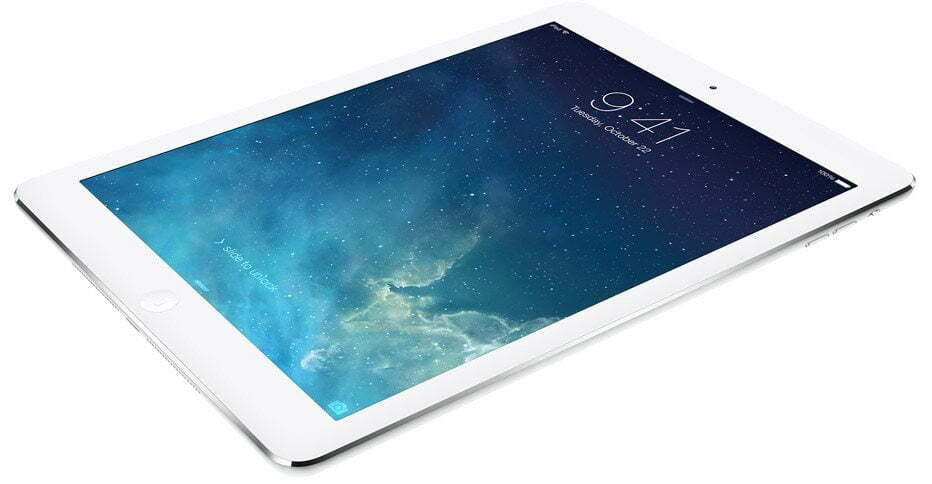

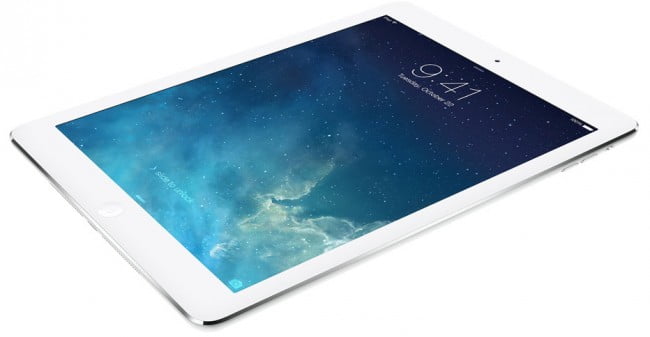
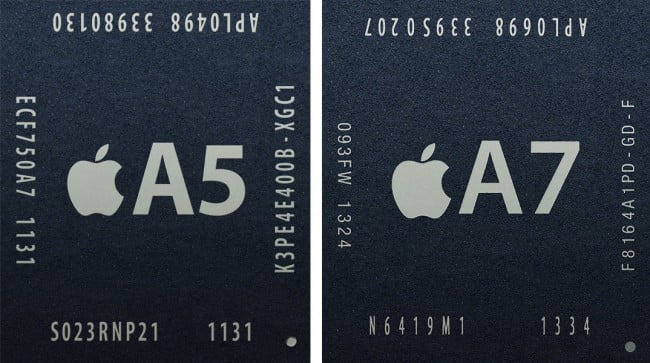
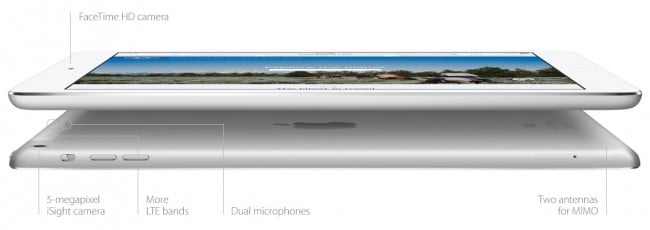
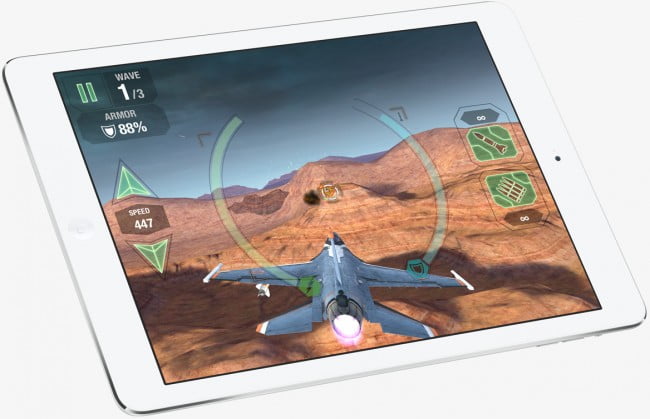












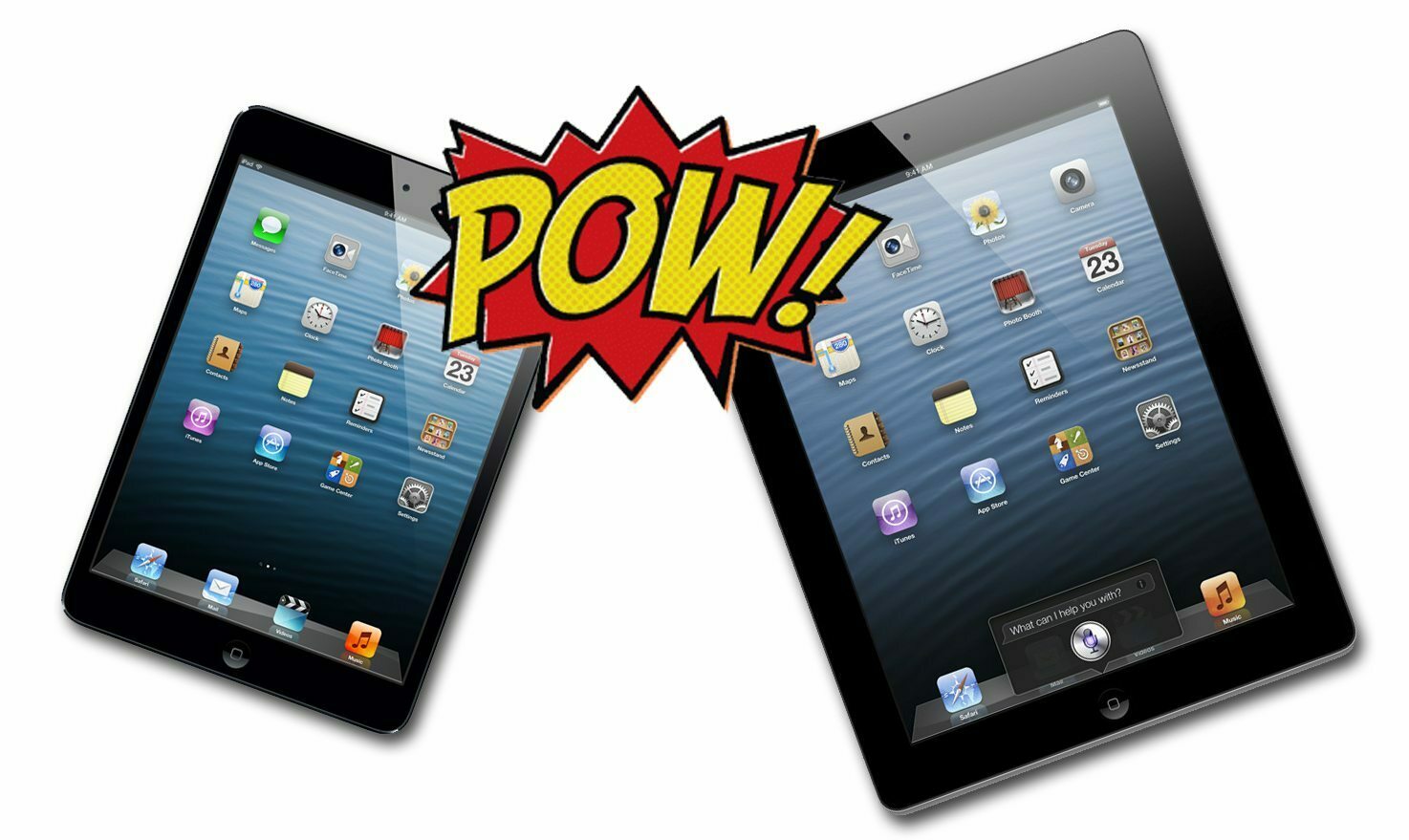
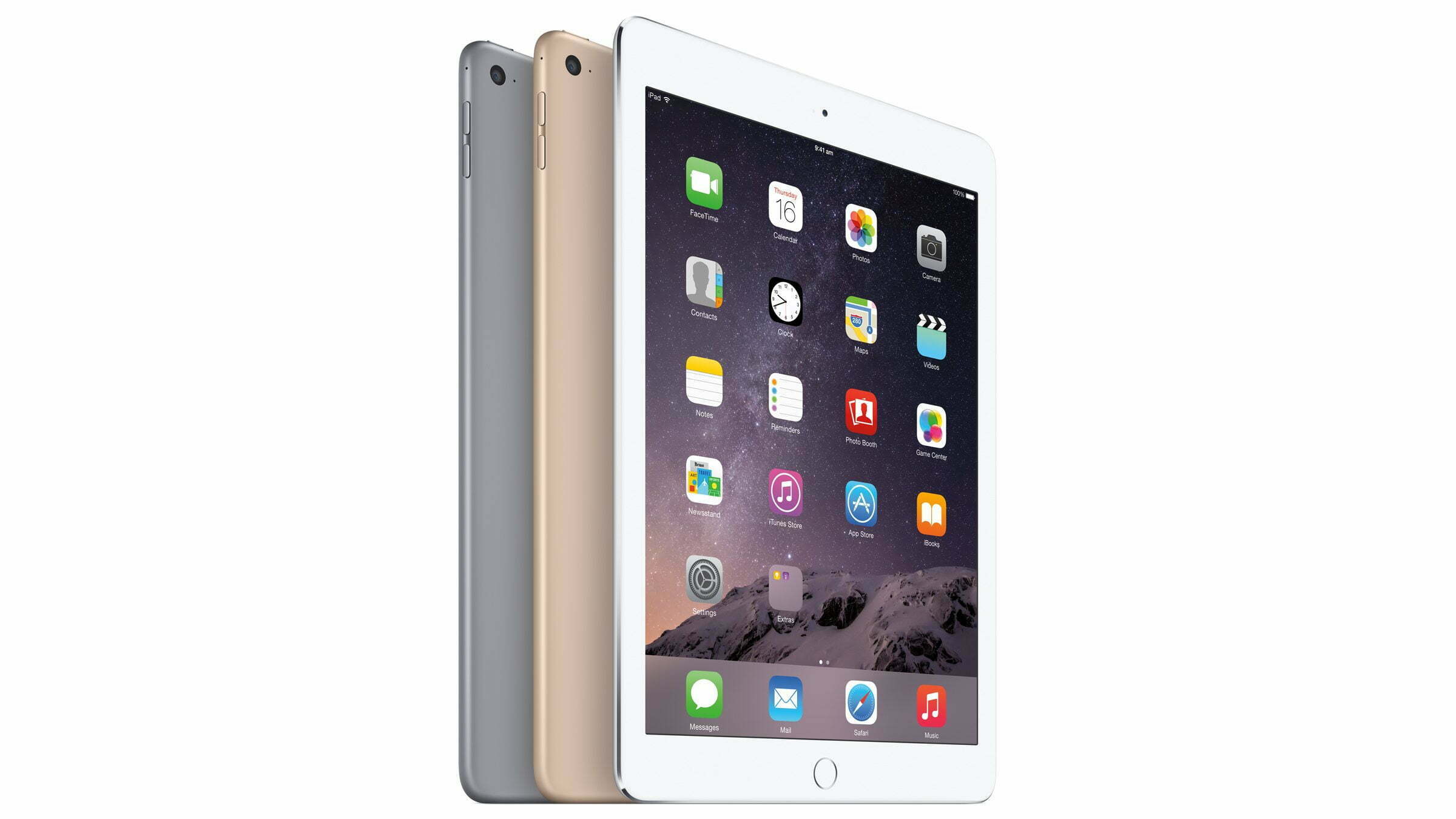
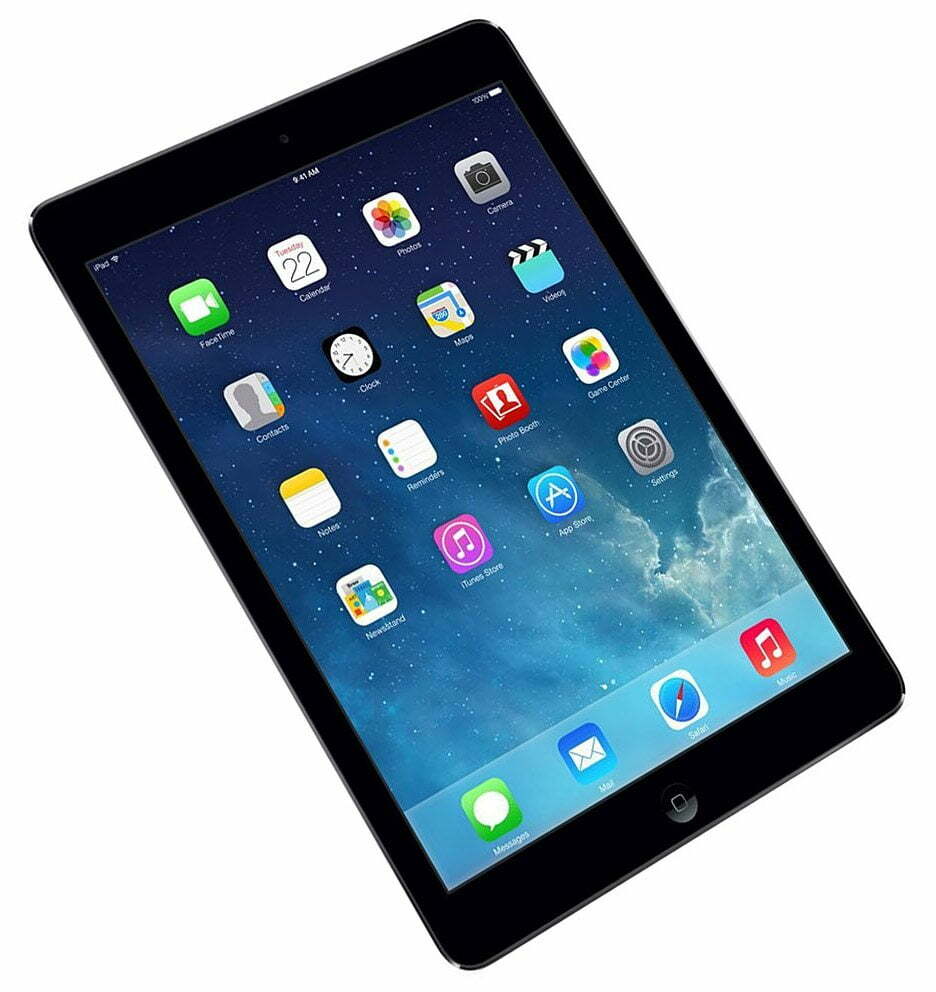
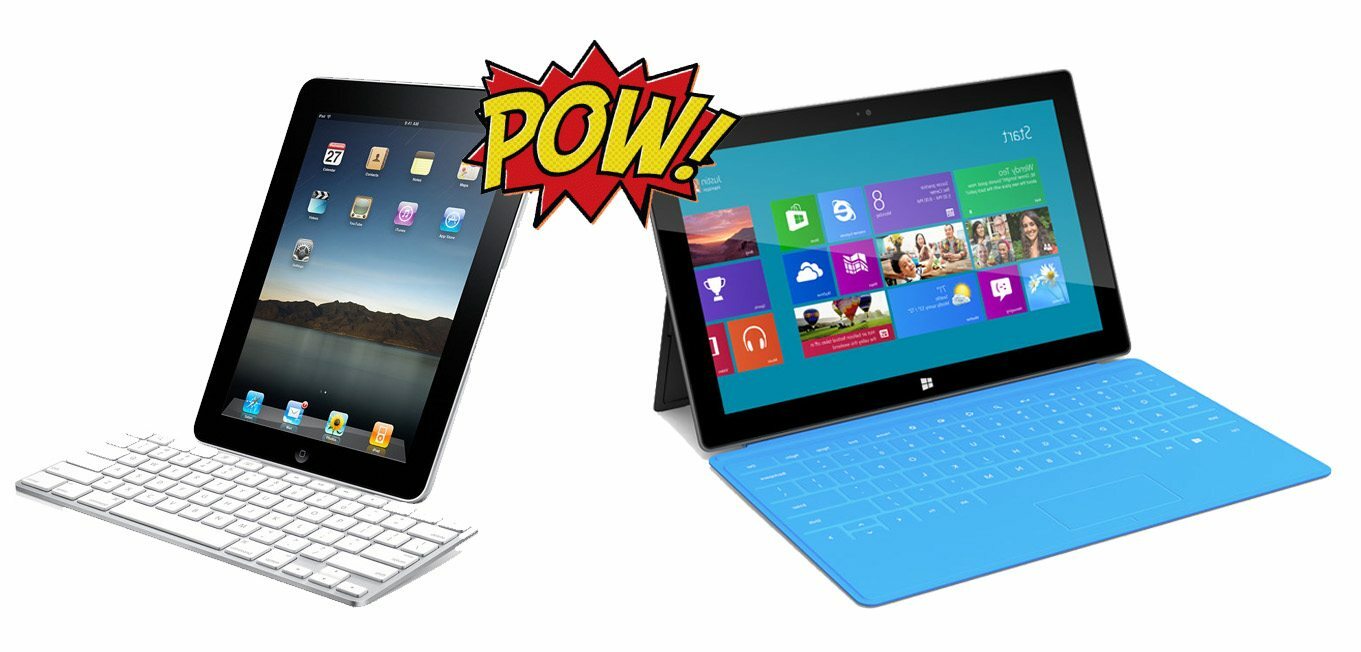
![Best Tablets in [year] ([month] Reviews) 17 Best Tablets in 2026 (January Reviews)](https://www.gadgetreview.dev/wp-content/uploads/best-tablets-image.jpg)
![Best BenQ Monitors in [year] 18 Best BenQ Monitors in 2026](https://www.gadgetreview.dev/wp-content/uploads/best-benq-monitor-image.jpg)
![Best Laptops in [year] ([month] Reviews) 19 Best Laptops in 2026 (January Reviews)](https://www.gadgetreview.dev/wp-content/uploads/microsoft-surface-book.jpg)
![Best iPads in [year] ([month] Reviews) 20 Best iPads in 2026 (January Reviews)](https://www.gadgetreview.dev/wp-content/uploads/Best-iPad-image.jpg)
![10 Best Chinese Tablets in [year] 21 10 Best Chinese Tablets in 2026](https://www.gadgetreview.dev/wp-content/uploads/Best-Chinese-Tablet.jpeg)
![10 Best Drawing Tablets in [year] 22 10 Best Drawing Tablets in 2026](https://www.gadgetreview.dev/wp-content/uploads/Best-Drawing-Tablet.jpg)
![10 Best Tablets for Reading in [year] 23 10 Best Tablets for Reading in 2026](https://www.gadgetreview.dev/wp-content/uploads/Best-Tab-for-Reading.jpg)
![10 Best Gaming Tablets in [year] 24 10 Best Gaming Tablets in 2026](https://www.gadgetreview.dev/wp-content/uploads/Best-Gaming-Tablet.jpg)
![10 Best Tablets for Travel in [year] 25 10 Best Tablets for Travel in 2026](https://www.gadgetreview.dev/wp-content/uploads/Best-Tablet-for-Travel.jpg)
![10 Best Rugged Tablets in [year] 26 10 Best Rugged Tablets in 2026](https://www.gadgetreview.dev/wp-content/uploads/Best-Rugged-Tablet.jpg)
![10 Best Tablets for Musicians in [year] 27 10 Best Tablets for Musicians in 2026](https://www.gadgetreview.dev/wp-content/uploads/Best-Tablet-for-Musicians.jpg)
![10 Best Tablets for Note Taking in [year] 28 10 Best Tablets for Note Taking in 2026](https://www.gadgetreview.dev/wp-content/uploads/best-tablet-for-note-taking.jpg)
![10 Best Battery Life Laptops in [year] 29 10 Best Battery Life Laptops in 2026](https://www.gadgetreview.dev/wp-content/uploads/best-battery-life-laptop.jpg)
